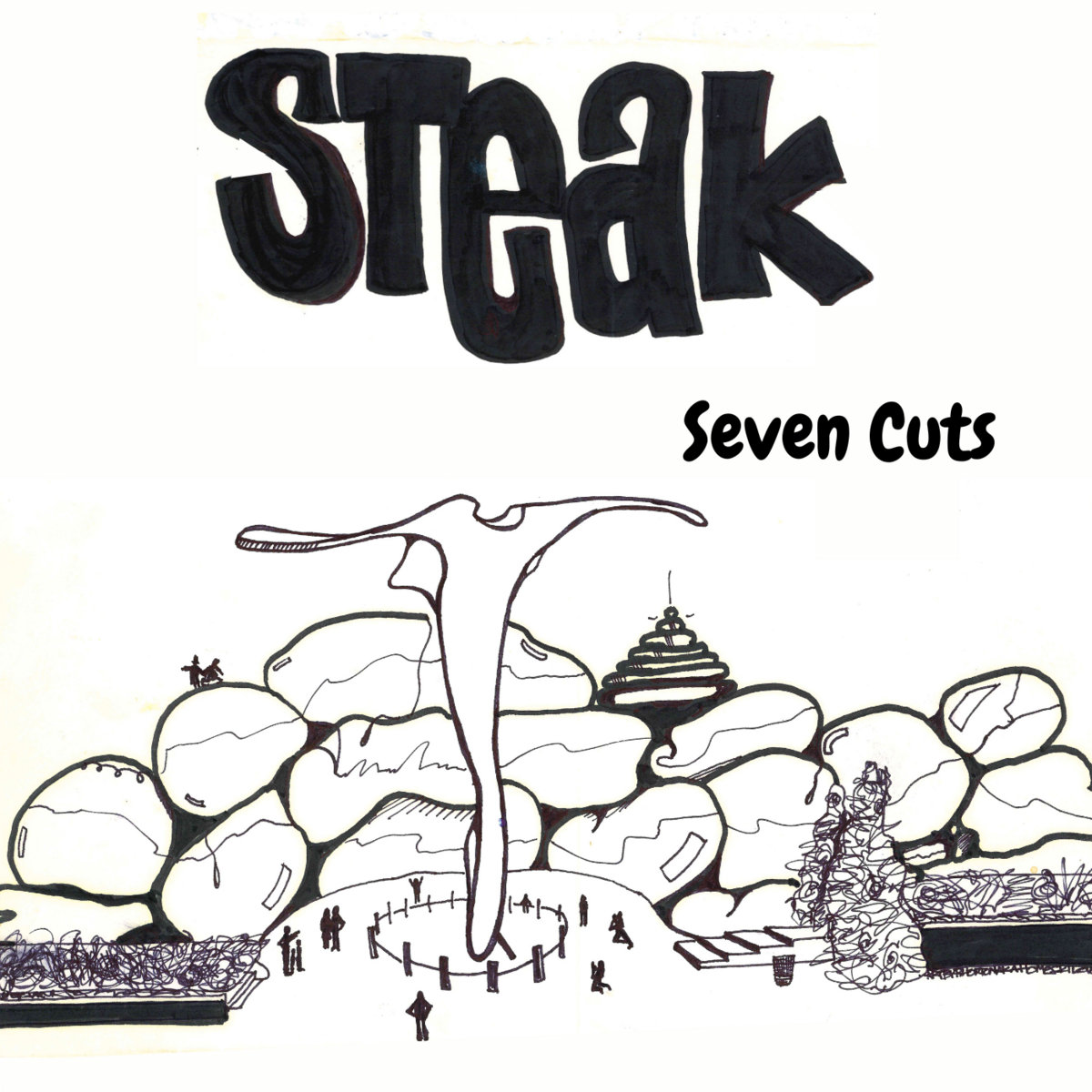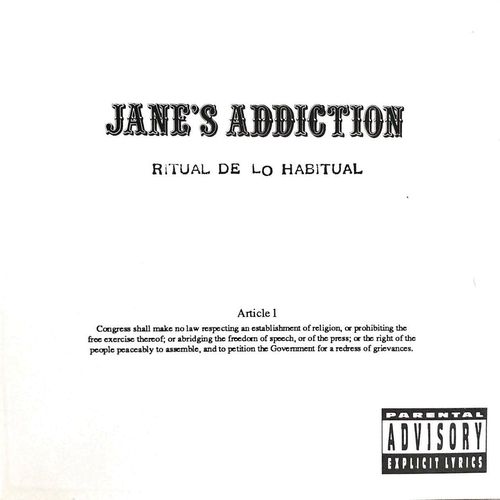
The ‘90s were a pretty dry decade as far as new Bruce Springsteen music was concerned. His first attempt at a Bootleg Series-style release,
Tracks, arrived near the end of it, and while it was comprehensive, but still left fans disappointed, as it only scratched the surface. Come the new century, further archival digs expanded on albums like
Darkness On The Edge Of Town and
The River, and he would also open the vaults to share various classic concerts via his own website.
An interval even longer than the major-label-debut-to-box-set-retrospective period capped by Tracks went by before a sequel of sorts appeared. Tracks II: The Lost Albums 1983-2018 differed from its predecessor in that this sprawling seven-CD collection (equivalent to nine LPs) consisted of completed album projects that he decided against releasing upon completion for various reasons. As it turns out, three of those albums date from the ‘90s, so now fans can argue with themselves over whether they might have enjoyed them in real time or not.
The first such collection, L.A. Garage Sessions ‘83, dates from the post-Nebraska pre-Born In The U.S.A. period, when he’d started writing more character-driven stories, haunted with the legacy of Vietnam, but some fun love songs too. The music is not as lo-fi as the tunes on Nebraska, using more keyboards and drum machines with a more full sound overall, possibly with the idea that it could be another releaseable album as is. The most full CD in the set, it gets its title from the venue where it was recorded, so if you’re looking for trashy rock (or Electric Nebraska), too bad. Of these songs, only “My Hometown” made the next album, and “Johnny Bye Bye” and “Shut Out The Light” would be B-sides. His rewrite of Elvis Presley’s “Follow That Dream” had been played live already, and “Sugarland” would be tried on the next tour. “Richfield Whistle” is more subdued, but the potentially harrowing tale in “The Klansman” is paired with an incongruous rockin’ backing. “Seven Tears” sounds like some of the rockabilly Tom Petty was trying (and didn’t release) around the same time, though “Unsatisfied Heart” has all the makings of a hit, moreso than the two versions of “Fugitive’s Dream”, with which it shares lyrics.
The drum machines heard on the first disc evolved over the ten-year jump to the next album. Streets Of Philadelphia Sessions doesn’t include the title track, for which he won an Oscar, but the songs are just as down, exploring more of the struggles of maintaining relationships. Some of these songs were built from drum loops, and again, the fans who wanted him to rock out would have been disappointed—again—and particularly after his last three, more low-key albums. It was their (and our) loss, because the songs are generally strong, and presented better than on the one-two disappointment of Human Touch and Lucky Town. Well, okay, the repeated “yeah” sample detracts from “Blind Spot”, an otherwise strong tune. “Maybe I Don’t Know You” and “The Little Things” are a little too literal, bested by “Something In The Well”, which shares lyrical ties with Tunnel Of Love; “Waiting On The End Of The World” is more cut from that cloth sonically too. Some of these aren’t too far removed from Peter Gabriel’s recent explorations on the same themes, like “Between Heaven And Earth”. “We Fall Down” and “One Beautiful Morning” are more energetic, and “Secret Garden” sounds very much like the eventual E Street-embellished version, but the artificial drums stick out here. Still, it doesn’t kill the song any. “Farewell Party” repeats some lines from “Blind Spot”, but is even more visual. To be blunt, it was a mistake to shelve this particular album.
The box makes another ten-year jump, this time to a collection of songs allegedly written and recorded for a movie that never got made. Partly instrumental, Faithless has a western prairie vibe, and wouldn’t have been any more surprising a departure for the time than The Seeger Sessions, and coming right after Devils & Dust. Besides, you can get away with more on a soundtrack. This is dusty music, exemplified by the title track and the nearly atmospheric instrumentals. His kids sing on “Where You Going, Where You From”, unfortunately, but “All God’s Children” could easily be mistaken for a latter-day Tom Waits album. But for the lyrics and the eventual gospel chorus, “God Sent You” could have been left over from the Darkness sessions. Without knowing what the film was supposed to be about, we can only guess what these mildly religious tunes are intended to illustrate, but it’s another diversion thankfully available to hear.
Back in the ‘90s, the album now known as the Streets Of Philadelphia Sessions was abandoned, and he got back together with the E Street Band for the sessions that led to the new tracks on the Greatest Hits album. This presumably bought him the time and clout necessary to proceed with The Ghost Of Tom Joad, which it turns out was just part of the music he’d been churning out unbeknownst to us mortals. The way he tells it, Tom Joad was recorded at night, while the days were busy with Somewhere North Of Nashville, a straightahead country album that turns the volume up with extra twang. It’s not a new sound for him; the remake of “Stand On It” is close enough to that old B-side, just as “Janey Don’t You Lose Heart” replaces the ‘80s keyboard with pedal steel and fiddle. Two of the songs were released by other people as covers, and three different songs describe a particular type of “man”; “Repo Man” has a rockin’ piano but is throwaway, “Detail Man” isn’t much different, but “Delivery Man” is a pretty funny tune first tried back in 1983. (Garry Tallent, Danny Federici, and even Max Weinberg are on this disc, if that helps.) “Tiger Rose” is more rockabilly than modern, and the cover of Johnny Rivers’ “Poor Side Of Town” predicts his covers album two decades away. The understated near-Eagles quality of “Under A Big Sky”, “You’re Gonna Miss Me When I’m Gone”, and “Blue Highway” come as a relief to the louder tunes. The title track was previously known as a subdued interlude of sorts on Western Stars; here’s it more fleshed out. He still sounds like himself throughout the disc, but we wonder if the fans would have appreciated this at a time when Garth Brooks was inescapable.
He must have thought so too, as he also sat on it. Meanwhile, the critical acceptance of Tom Joad gave him the courage to keep exploring the history of migrant workers—in the American southwest as well as in New Jersey—which is where the songs on Inyo came from. This is quiet music again, where he’s accompanied only by Soozie Tyrell on fiddle and vocals and embellishments from Ron Aniello, except for when the mariachi bands show up on “Adelita” and “The Lost Charro”. Except for those two, the music is gentle enough to lull, so it’s not easy to follow the story he’s telling, which obviously meant a lot to him. (Far as we can tell, there are a lot of dead children, and plenty of injustice, hardship, and heartbreak.) “One False Move” and “When I Build My Beautiful House” are the least “genre-like” tracks here, and it’s too bad he couldn’t find another place for them. But likely not interested in testing his audience with another Tex-Mex detour—even one that was more upbeat than Tom Joad, low as the bar was—he shelved Inyo, concentrating instead on compiling the Tracks box and reuniting with the E Street Band again.
The new century saw him back to putting out albums on a more consistent basis, but more often, they were increasingly compiled from disparate sessions with rotating players, as with Wrecking Ball and Western Stars. Twilight Hours is another “companion” album, presenting the more orchestral pop side to the California pop of Western Stars, complete with major-seventh chords for the first time in his career. (Mighty Max Weinberg drums on most of the tunes.) He’s almost crooning here, taking on the guise of an older romantic in the depths of a midlife crisis. “Sunday Love” is the most blatant Bacharach pastiche, lyrically and arrangement-wise, among several, but he pushes his luck with the bossa-nova beat of “Follow The Sun”. “Late In The Evening” and “Two Of Us” might as well be the Spinners without the funk, considering both borrow from the same song. “Lonely Town” is downright forlorn, a cross between Tom Waits (again) and Elvis Costello’s Bacharach collaborations, while “September Kisses” channels Roy Orbison. The more paternal “I’ll Stand By You” had actually been written with the Harry Potter movies in mind; this version is from a different movie soundtrack. “Another You” and “Dinner At Eight” are just plain romantic. “High Sierra” (with lyrical echoes of Inyo as well as “Fugitive’s Dream” and “Unsatisfied Heart” from the first disc), “Sunliner”, and the almost hopeful title track are very much along the lines of the album that did come out; it’s pretty impressive that he had this much in the tank.
Capping the set is Perfect World—not an album per se, but a collection of various one-off tracks that kept falling off the stove. Any of these could conceivably have been included on Wrecking Ball or High Hopes, though they likely wouldn’t have improved them. It kicks off with the rockers everyone waited four hours to hear—once again hedging his bets that the fans wouldn’t like the other stuff in the box. The first three songs are collaborations with fellow heartland rocker Joe Grushecky, and already released by his Houserockers: “I’m Not Sleeping” sounds like Jon Bon Jovi fronting the Asbury Jukes, “Idiot’s Delight” has a Dylanesque whine, and “Another Thin Line” cops elements of several Animals songs. “The Great Depression” rolls along with banjo again and, like “If I Could Only Be Your Lover”, has some Western Stars sweep to it. It’s not his fault that “Blind Man” sounds like the Wallflowers, and “Cutting Knife” echoes Tom Petty style-wise, but even though “Rain In The River” is a little sludgy, his voice mixed to the point of near incomprehension, it kicks. Featuring the only appearance of Little Steven, the anthemic “You Lifted Me Up” is a happy love song—a rarity in this set, particularly when followed by the regret of the title track, first released in a version by John Mellencamp.
Seven new albums in five hours is a lot to take in. But each installment is treated as its own entity, complete with unique artwork, so it’s best to ingest them one at a time. Frankly, the overall quality of the music here suggests that he did himself a disservice by holding these albums back. It’s one thing to not release them for fear of alienating his audience, but doing so also made it seem like he was afraid to risk a commercial flop. Some would call that pandering. Had he taken chances, he might not have had to wait a quarter-century to be appreciated for widening his artistry, and even gotten respect for stretching himself.
Many longtime fans balked at the inflated price, even considering the heavily annotated clothbound book. Because why not, Lost And Found offered twenty “selections from the lost albums”, evenly representing each of the albums in the order they’re presented in the box. Therefore it’s pretty much all over the place, but it does include some of the more surprising left turns to be found. And just like in the big set, there’s not a single saxophone to be heard anywhere.
Bruce Springsteen Tracks II: The Lost Albums 1983-2018 (2025)—3½
Bruce Springsteen Lost And Found: Selections From The Lost Albums (2025)—3
 A new label deal brought TAFKAP under the purview of Arista, then currently raking in the bucks with Santana’s all-star collaboration album Supernatural. Not very surprisingly, special guests appeared on Rave Un2 The Joy Fantastic too, which arrived mere months after The Vault. The album had a production credit for Prince, but all the vocals and instruments he played—mostly by himself, with only some help from other musicians—were credited to the symbol, so do your own math.
A new label deal brought TAFKAP under the purview of Arista, then currently raking in the bucks with Santana’s all-star collaboration album Supernatural. Not very surprisingly, special guests appeared on Rave Un2 The Joy Fantastic too, which arrived mere months after The Vault. The album had a production credit for Prince, but all the vocals and instruments he played—mostly by himself, with only some help from other musicians—were credited to the symbol, so do your own math.






